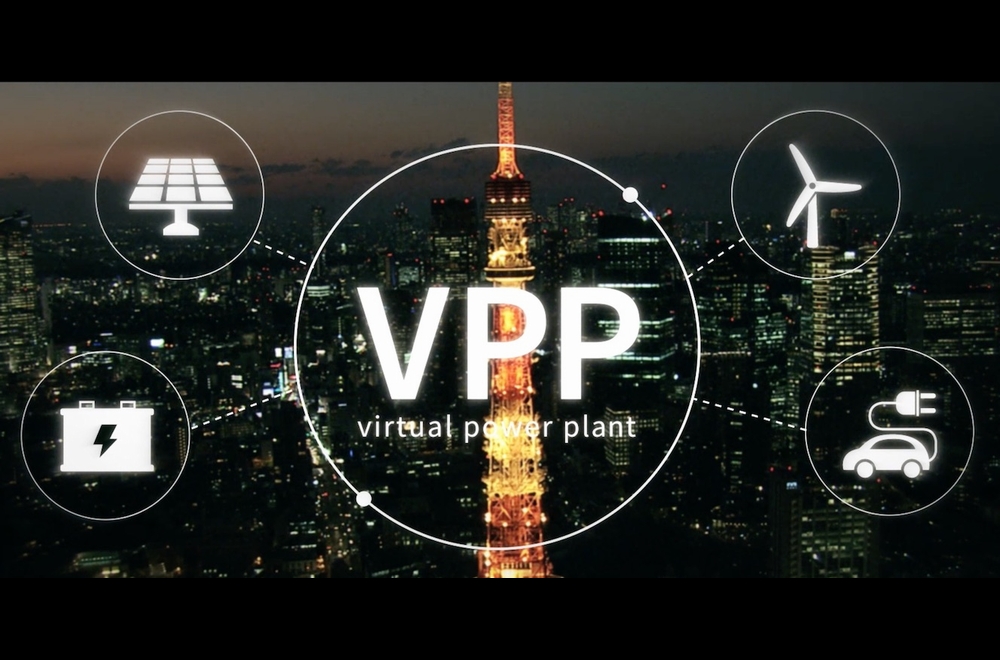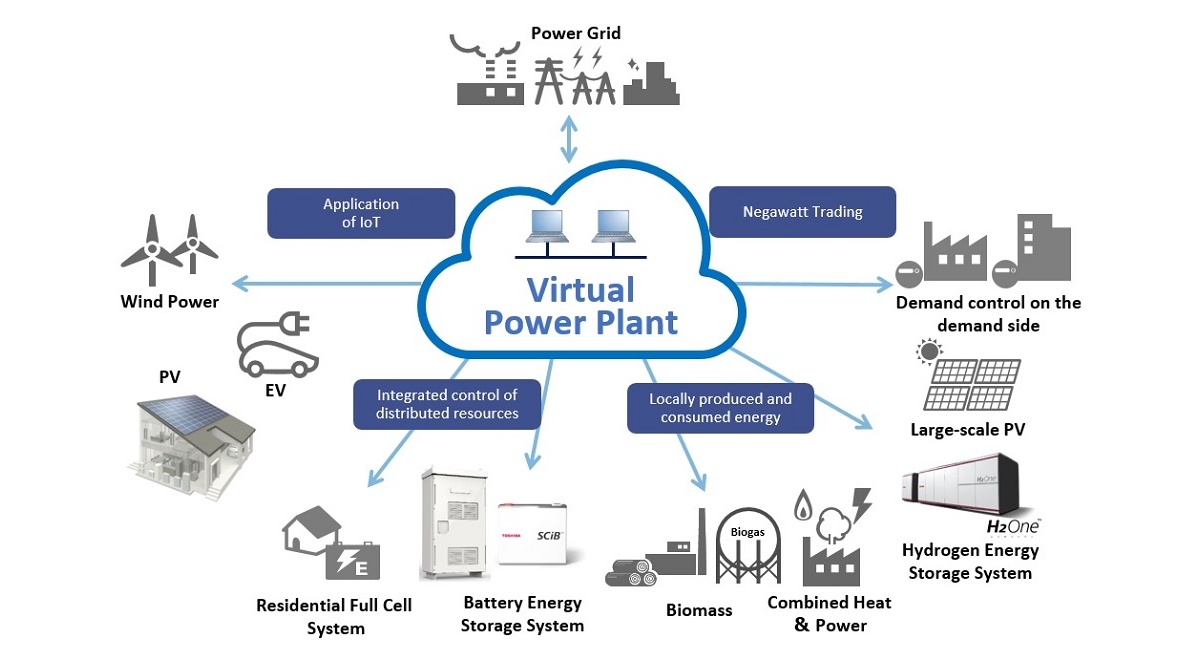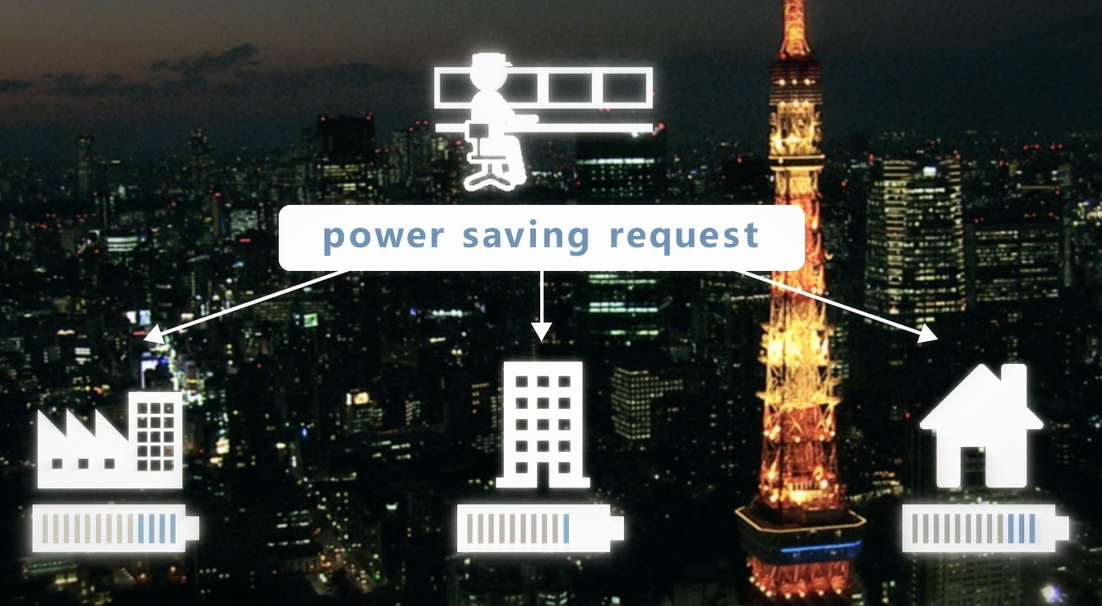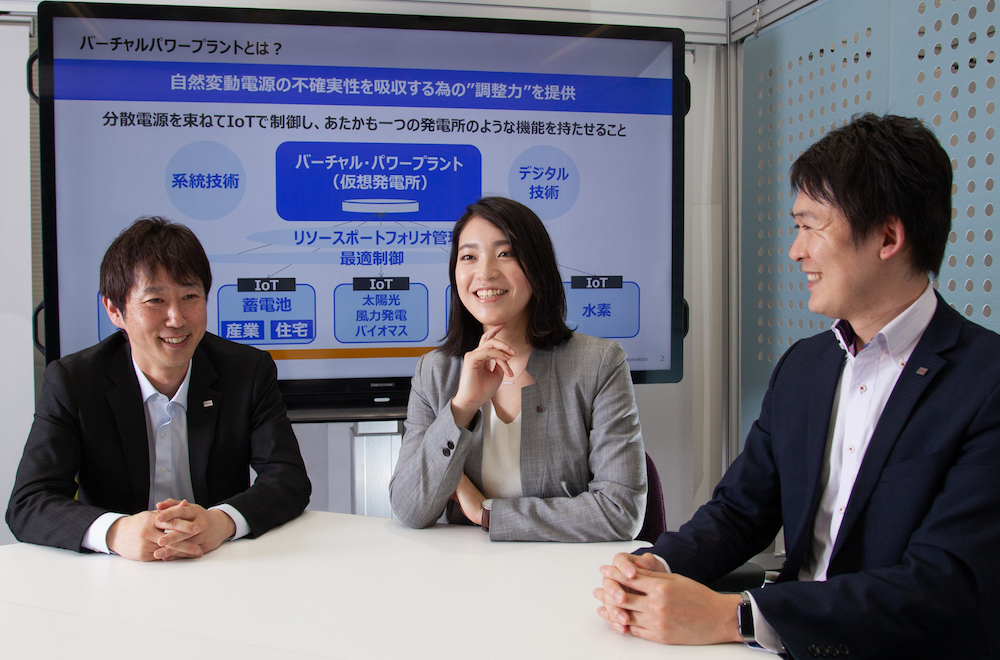What is VPP? Invisible Power Plant in Action
2019/03/20 Toshiba Clip Team

Virtual is a word we’ve come to hear more frequently in recent years. There’s virtual reality, which simulates interactive environments, and there are virtual currencies, like Bitcoin, unregulated digital money. Now virtual is reaching into the world of energy, and we are seeing the development of virtual power plants, VPP as they are known. And they are attracting a lot of attention.
So, just what is a VPP?
By its very nature, the amount of electricity generated is the same as the amount consumed. That means that the power companies that handle the generation, transmission and distribution of electric power are constantly adjusting output levels to meet anticipated consumption, and to maintain a dynamic balance between supply and demand. If those efforts fail, and supply becomes unstable, power outages result.
This video was released on March 20, 2019.
Of course, utility companies are adept at managing supply—but it comes at a cost. To keep the grid up and humming at all times, utilities operate with a reserve margin of capacity—power plants that exist to provide power at times when peak demand exceed capacity (think hot summer days or winter storms). In the US, according to the U.S. Energy Information Administration, most utilities target a reserve margin of 13 to 15%(*1), and most have more than that. That’s a lot of capacity that goes unused most of the time but that must be maintained and ready to come on line, and as a result, maintaining supply at the margin is an expensive and inefficient process.
*1 U.S. Energy Information Administration,
https://www.eia.gov/todayinenergy/detail.php?id=6510
For many of the people grappling with the problem of how to secure stable energy while also mitigating the effects of climate change and reducing costs, renewables are the way forward.
Wind turbines and their almost hypnotic blades are today a familiar sight, as are glittering solar panels on the roofs of residential streets; reminders of the efficiency improvements and cost reductions renewables have achieved in the last decade. More recently, storage batteries and heat pumps have found wider use, and the number of e-vehicles on the road grows every day. As a result, mechanisms for generating and storing electricity are scattered all around us, and this is blurring lines. Consumers no longer just use electricity, they can also generate it—and even produce a surplus for sale.

For proponents of renewables, that surplus points the way forward. Harness surplus renewable energy, the argument goes, and bring it into the grid. Improve efficiency and lower costs with a green solution.
However, power has to be fed into the grid when it is needed, and that is the downside to renewables. Solar doesn’t work at night, and its output falls on cloudy days, and when the wind doesn’t blow, wind turbines are still. The output of renewables is uneven and uncertain, factors that have held back their adoption. But now there is a way forward, the VPP.
A VPP brings advanced energy management technologies to dispersed energy generation sources. It bundles them together in a network—that’s the virtual plant—and applies IoT and AI to aggregating output and controlling their connection to the grid. In combination and managed by a VPP, small, isolated power generation points can be used in load-leveling, to absorb excess supply from renewables, and to deliver supply during shortages. The VPP is a solution that solves problems on both the generation side and the demand side.
To carry out these management functions, a VPP has to be capable of smooth control of numerous distributed power generation facilities and power storage facilities in real time. That’s achieved with IoT technologies to monitor and remotely control the equipment and devices, and AI know-how that can deliver accurate forecasts of power generation from renewables and of consumer demand. These are the building blocks. Used to realize fine adjustments and no-waste generation, they will also contribute to one of our most pressing concerns, the decarbonization of society.
The capabilities of VPP extend even further. Used in combination with energy management systems at consumer sites, VPP can create and support innovative services. For instance, power that is not consumed as a result of incentives on the demand side, is seen as having the same value as power that is generated, and is measured as a “negawatt.” VPP can stimulate realization of negwatts, and manage them.
In 2021 a new VPP market will be created
Like VPP, negawatts are attracting attention, not only because megawatt incentives encourage consumers to use less electricity, but also because the reductions they secure can be traded as commodities; companies that realize negawatts can sell them to other companies on an exchange. Pilot schemes are underway around the world, in the US and the EU, and Japan, where test projects were initiated in fiscal year 2017, aims to have a full-scale market up and running by 2021.

Negawatt trading is typically promoted by aggregators who work with electric utilities and customers such as factories—large power consumers. When supply looks tight, they offer customers monetary incentives to cut use and reduce demand, a process known as demand response. This eases pressure on the suppliers and also saves electricity as negawatts. In a fully realized market, it will become possible to buy electricity generated from all kinds of power supply sources, including low cost generation by consumers.
As the 2020s progress and this new energy supply market grows, VPP will play the role of managing and using widely distributed power sources. The potential of numerous small-scale generation facilities, widely dispersed in offices, factories and homes, and even electric cars, is immense. In the new future, VPP will have an indispensable part to play in realizing a decarbonized society.
![]()
Related Links
*This section contains links to websites operated by companies and organizations other than Toshiba Corporation.
https://www.toshiba-energy.com/en/renewable-energy/index.htm







